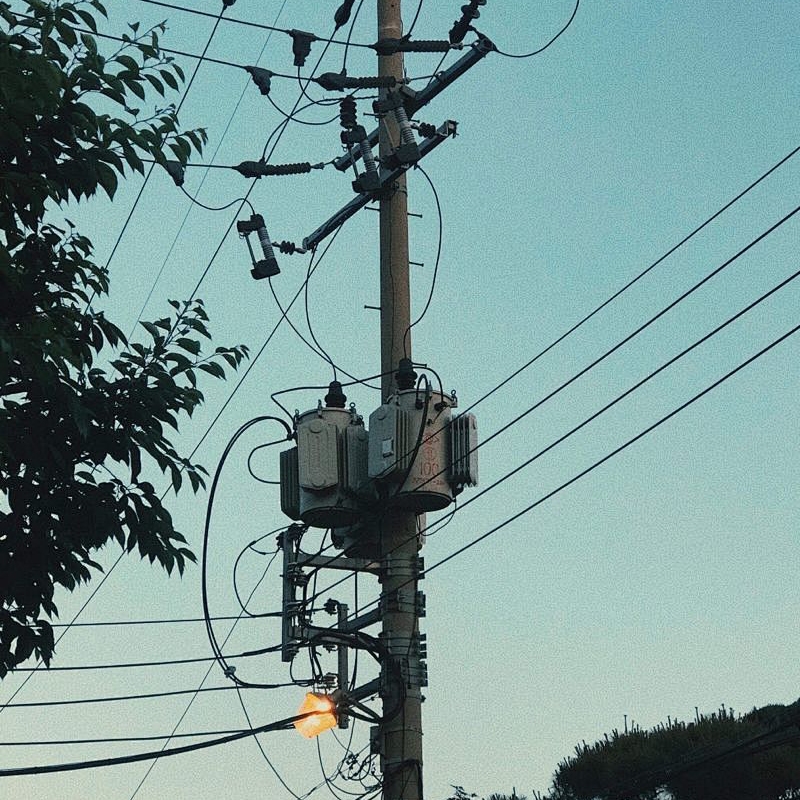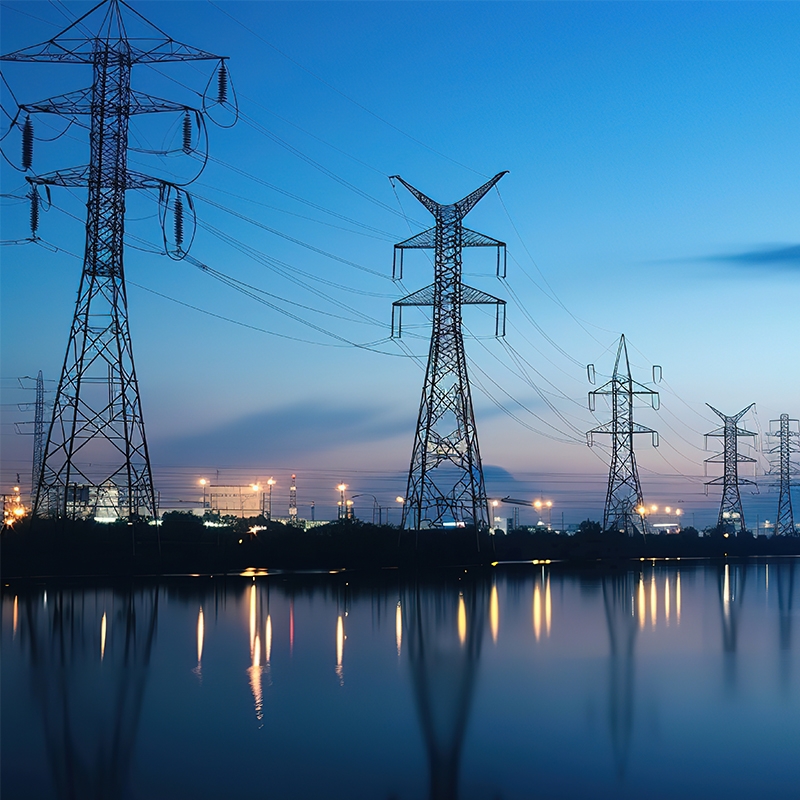Power transformer related knowledge, this article is enough!
Power Transformer (Chinese symbol for short B, international text symbol for T), power transformer is the most critical primary equipment in the power supply and distribution system, mainly used in the public power grid and industrial power grid, the electric energy of a given voltage value into the required power of another voltage value, in order to facilitate the reasonable transmission, distribution and use of electric energy.
Classification and characteristics of power transformers
1. By function
(1) Booster transformers are used to raise lower voltages to higher voltage levels in long-distance transmission and distribution systems. The aim is to reduce the loss of electrical energy in transmission lines.
(2) Step-down transformer is directly supplied to the terminal substation of various users, and step-down transformer is used.
2. According to the number of phases
(1) Single-phase transformer Single-phase transformers are generally dedicated to single-phase equipment with small capacity.
(2) Three-phase transformers Three-phase transformers are widely used in the power supply and distribution system of the substation.
3. According to the winding conductor material
(1) Copper winding transformer Copper winding transformer loss is lower, so especially large capacity copper winding transformer has been more widely used.
(2) Aluminum winding transformer Aluminum winding transformer loss is high, but the price is cheaper than copper winding transformer. 4. According to the winding type
(1) Double-winding transformers are used to transform a voltage site.
(2) Three-winding transformers are used in places that require two voltages, with one primary winding and two secondary winding.
(2) Autotransformer is mostly used in the laboratory for voltage regulation. The primary and secondary sides are not only magnetically connected but also electrically connected.
5. According to the capacity series, R10 series is used to determine the capacity of the transformer, that is, according to the multiple of R10 equal to 1.26, Commonly used are 50, 63, 80, 100, 125, 160, 200, 250, 315, 400, 500, 630, 800, 1000, 1250, 1600, 2000, 2500, 3150 KV·A, etc.
(1) Small transformer capacity below 500KV·A transformer.
(2) Medium transformer capacity between 630 ~ 6300KV·A transformer.
(3) Large transformer capacity above 8000 KV·A transformer.
6. According to voltage regulation
(1) No-load regulating transformers are generally used in places where the voltage level is not high, especially distribution transformers of 10KV and below.
(2) On-load voltage regulator transformers are mainly used in power systems above 10KV and places with high voltage level requirements.
Seven. By installation location
(1) Indoor type
(2) Outdoor type
8. According to the cooling method and winding insulation
(1) Oil-immersed self-cooling type, oil-immersed air-cooled type, oil-immersed water-cooled type and forced oil circulation cooling mode features: good insulation and heat dissipation performance, low price, easy maintenance; The flammability of oil makes it inconvenient to use in flammable and explosive situations and high safety requirements.
1) Self-cooling is used for ordinary small and medium-sized capacity transformers.
2) Water-cooled and forced oil circulation cooling methods are used for large-capacity oil-immersed transformers.
3) Air-cooled fan to strengthen the heat dissipation of the transformer cooling is generally used for large-capacity transformers (2000KV·A and above) and places with poor heat dissipation conditions.
(2) Dry pouring type, open type, closed characteristics: simple structure, small size, light weight, fire, dust, moisture, expensive, used in places with high safety and fire protection requirements, such as large buildings in the substation, underground substation and mine substation. (3) Inflatable (SF6) transformers that use filled gas for insulation and heat dissipation: excellent electrical performance, used in places with high safety and fire protection requirements, and often work with other inflatable electrical appliances to form complete sets of devices.
9. By use
(1) Ordinary transformer
(2) lightning protection transformer
(3) Distribution transformer 6 ~ 10kV / 0.4kV transformer
(4) The main transformer installed in the total step-down substation transformer
Three power transformer structure
1. Basic structure of transformer
(1) Circuit part: the primary winding is connected with the system circuit and power supply, and the secondary winding is connected with the load.
(2) Magnetic circuit part: the core of the transformer (the surface is coated with insulating paint film of silicon steel sheet staggered into a core) - composed of an iron yoke and an iron core column.
2. Commonly used three-phase oil-immersed power transformer
(1) Oil tank box, box cover, heat dissipation device, oil discharge valve
1) Box
There are winding, core and transformer oil in the box; Transformer oil has the function of circulating cooling and heat dissipation, as well as insulation; The winding has a certain distance from the box (box wall, box bottom) and is insulated by the oil in the tank.
2) Four structures of the fuel tank
① The two ends of the pipe of the heat dissipation tube are communicated with the box. After the oil is heated, it flows into the pipe body through the upper port of the heat dissipation tube. After cooling, it flows back into the box through the lower port, forming A cycle for the transformer of 1600KV·A and below.
The tank with radiator is used for transformers above 2000KV·A.
③ Flat top fuel tank
④ Corrugated tank (corrugated tank)
(2) High and low pressure casing
The bushing is a porcelain insulated tube with a conductor inside, which is used for fixing and insulating the access and outlet of the primary and secondary winding of the transformer.
(3) Gas relay
Oil-immersed transformers with A capacity of 800KV·A and above, and indoor transformers with a capacity of 400KV·A and above are installed; Its function is to protect the gas in case of failure inside the transformer tank.
(4) There is a certain amount of oil stored in the oil storage tank (oil pillow) 1) function: supplement the transformer due to oil seepage and oil temperature changes caused by the decline in the amount of oil, when the transformer oil occurs thermal expansion and contraction to maintain the balance with the surrounding atmospheric pressure
2) Oil storage tank accessories:
The moisture absorber is connected with the space above the oil surface inside the oil pillow, and can absorb the moisture in the air entering the transformer to ensure the insulation strength of the oil.
(5) explosion-proof pipe
Function: Prevent fuel tank explosion accident. When a serious short circuit fault occurs inside the tank, the sharp decomposition of the oil produces a large amount of gas, resulting in a sharp increase in the internal pressure of the tank, so that the glass at the outlet of the explosion-proof tube will break itself, release the pressure, and make the oil flow to a certain direction.
(6) Tap changer
Function: Used to change the winding turns of the transformer to adjust the output voltage of the transformer.




